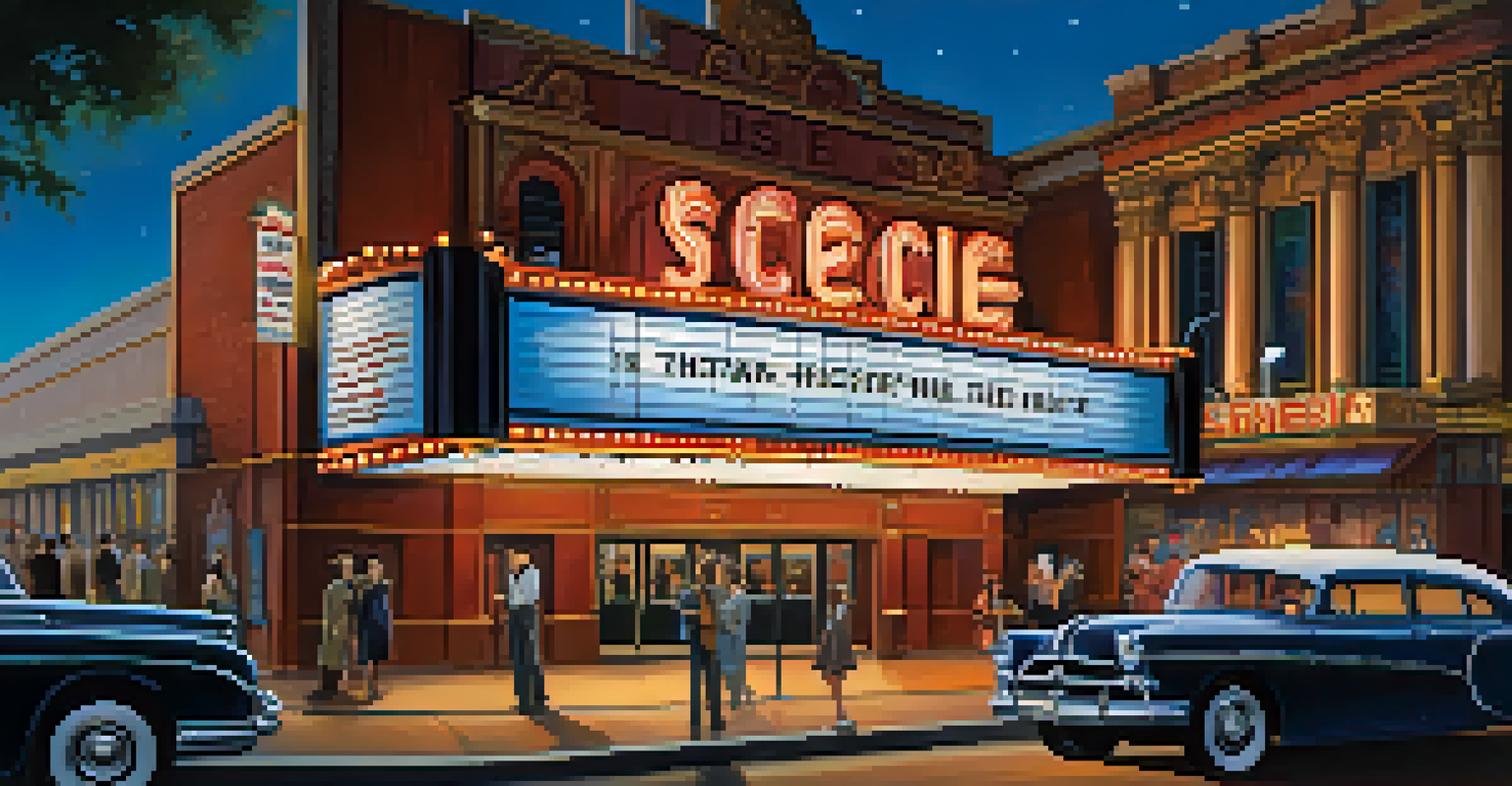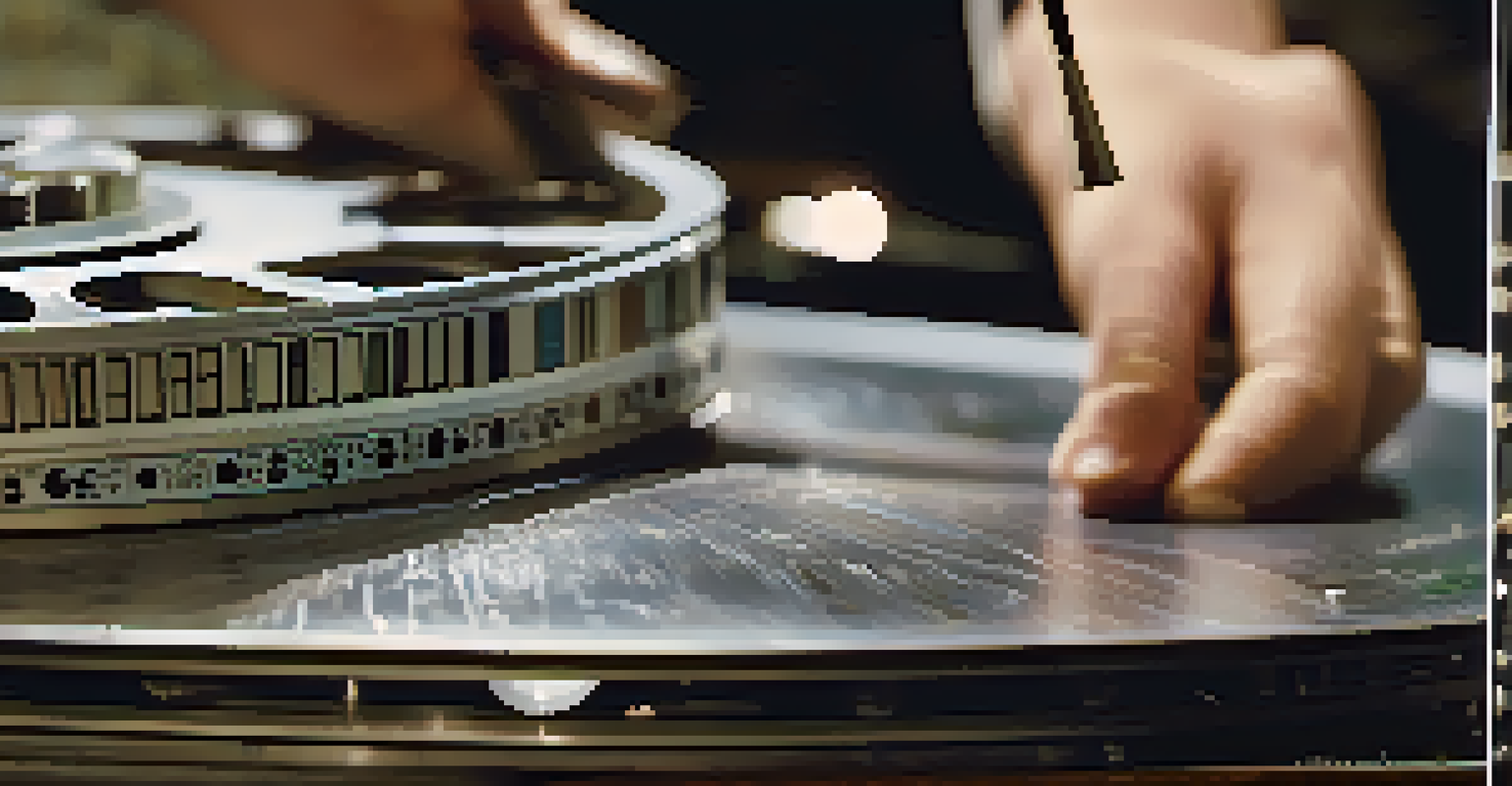The Economic Impact of Film Restoration on Hollywood Studios

Understanding Film Restoration and Its Importance
Film restoration is the process of repairing and preserving old films to maintain their quality for future generations. This meticulous process often involves repairing physical damage, color correction, and enhancing sound quality, ensuring that classic films continue to be enjoyed. As technology advances, the techniques used in film restoration have become more sophisticated, allowing studios to breathe new life into their archival content.
Film is a very powerful thing. It can be a tool for social change and a way to preserve culture and history.
For Hollywood studios, restoring older films is not just about preservation; it's also a strategic economic decision. By revitalizing classic titles, studios can tap into nostalgia and attract both older audiences and new generations. This not only drives ticket sales but also enhances the studio's brand value, connecting them with a rich cultural history.
Ultimately, restoring films is a commitment to cultural heritage that can yield significant financial returns. As audiences seek out classic films in theaters or on streaming platforms, studios discover that there is a growing market for well-preserved content, reinforcing the importance of investing in restoration.
The Financial Benefits of Restored Films
Restored films can significantly boost a studio's revenue stream. When a classic film is re-released in theaters or made available on streaming services, it can generate substantial box office revenue and increase subscriptions. For example, a restored classic like 'The Wizard of Oz' has seen renewed interest, leading to increased ticket sales and merchandise opportunities.

Moreover, restoration can enhance a film's longevity in the market. When a film is preserved and reintroduced, it has the potential for multiple revenue-generating opportunities, such as special screenings, anniversary editions, and merchandise sales. Studios often release restored versions on Blu-ray or DVD, further capitalizing on the nostalgia factor and attracting collectors.
Film Restoration Preserves Culture
Restoring classic films helps maintain cultural heritage and highlights societal values from the past.
The financial impact isn't just short-term; it can lead to long-term gains. As restored films gain popularity, they often find their way into educational institutions, film festivals, and retrospectives, creating additional revenue avenues while fostering a greater appreciation of cinematic history.
Boosting Employment in the Film Industry
Film restoration is a labor-intensive process that creates jobs across various sectors of the industry. From skilled technicians who work on the physical restoration of film reels to digital artists who enhance visual and audio quality, the demand for talent in this field is significant. As studios invest in restoration projects, they contribute to job creation, stimulating local economies.
Preserving film is preserving history, and it's important to understand where we came from to know where we are going.
Additionally, restoration projects often require the expertise of historians and archivists, who play a vital role in ensuring that films are contextually preserved. This encourages collaboration among professionals, fostering a community that values cinematic arts while providing diverse employment opportunities.
The ripple effect of increased employment extends beyond the studios themselves. Local businesses, such as restaurants and hotels, often benefit from the influx of staff and visitors related to film restoration efforts, creating a vibrant ecosystem around the film industry.
Restoration's Role in Film Tourism
Film restoration can also enhance film tourism, where fans travel to locations associated with their favorite movies. When a classic film is restored and screened at its original location, or in a venue known for its historical significance, it draws both local and international audiences. This influx of visitors can lead to increased revenue for local businesses and attractions.
For instance, special screenings of restored films can be held at iconic theaters, drawing enthusiasts who are eager to experience the magic of cinema in its original setting. This not only builds a stronger connection between audiences and the films they love but also encourages a deeper appreciation for film history.
Economic Boost from Restored Films
Restored films can significantly increase revenue for studios through re-releases and merchandise opportunities.
As studios recognize the potential of film tourism in conjunction with restoration projects, they can create promotional campaigns that highlight both the film and the locations where it was made. This partnership benefits not only the studios but also the communities involved, making it a win-win situation.
The Cultural Value of Restored Films
Beyond financial gains, film restoration plays a crucial role in preserving cultural heritage. Classic films often reflect the societal values and norms of their time, offering insights into history and culture that can be lost if the films deteriorate. By restoring and re-releasing these films, studios help keep these important narratives alive.
Moreover, restored films can spark conversations about social issues relevant to the era they were made. This can lead to increased public interest in historical contexts and encourage discussions about how far society has come since the film's original release. In this way, film restoration becomes a bridge connecting past and present.
As audiences engage with restored films, they develop a deeper appreciation for the art of filmmaking and its evolution over time. This cultural engagement not only benefits the studios but also enriches society by fostering a greater understanding of the cinematic arts.
Leveraging Technology in Film Restoration
Advancements in technology have revolutionized the film restoration process, allowing studios to achieve results that were once impossible. High-resolution scanning and digital restoration techniques enable filmmakers to recover details in films that may have been lost due to aging. This technological leap ensures that restored films maintain their authenticity while enhancing their visual appeal.
Moreover, the use of artificial intelligence (AI) in restoration can drastically reduce the time and cost involved. AI can help identify and fix imperfections in films, allowing restoration teams to focus on creative aspects instead of tedious manual labor. This not only streamlines the process but also increases efficiency, enabling studios to restore more films in a shorter time.
Job Creation in Film Restoration
The film restoration process generates employment across various sectors, stimulating local economies and fostering collaboration.
By leveraging these technological advancements, studios can create high-quality restorations that attract modern audiences while preserving the integrity of the original work. This blend of innovation and tradition is crucial in the ongoing success of film restoration efforts.
Challenges Faced in Film Restoration Projects
Despite its many benefits, film restoration comes with its own set of challenges. One of the primary issues is funding; restoration projects can be costly and may require a significant investment from studios. Balancing the budget while ensuring high-quality restoration can be a daunting task for studios, especially for lesser-known films that may not have a guaranteed audience.
Additionally, there are technical challenges involved in restoring films, particularly those with extensive damage. Each film presents unique challenges, from missing frames to deteriorating soundtracks. Restoration experts must carefully assess the condition of the film and decide on the best methods for recovery, which can be both time-consuming and complex.

Lastly, there’s the challenge of audience engagement. While nostalgia plays a significant role in attracting viewers to restored films, studios must also find innovative ways to market these films to younger generations who may not be familiar with them. Striking the right balance between honoring the original work and appealing to modern audiences is crucial for the success of restoration projects.